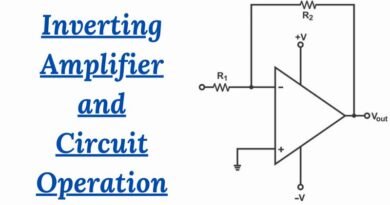Hardware Modeling Overview
In the world of technology, hardware modeling plays an important role in the development and design of electronic devices. It involves creating a virtual representation of a physical system or component, allowing engineers to analyze and simulate its behavior before it is manufactured.
What is Hardware Modeling?
Hardware modeling is the process of creating a digital representation of a hardware system or component using specialized software. This digital model, also known as a hardware model, is used to simulate and analyze the behavior of the physical system.
Hardware modeling can be applied to a wide range of electronic devices, including microprocessors, integrated circuits, printed circuit boards (PCBs), and more. It allows engineers to test and optimize the design of these devices, ensuring their functionality and performance.
The Benefits of Hardware Modeling
Hardware modeling offers numerous benefits to engineers and designers in the field of electronics. Here are some of the key advantages:
1. Cost and Time Savings
By creating a virtual model of a hardware system, engineers can identify and address potential issues early in the design process. This helps to reduce the need for costly and time-consuming physical prototypes, saving both time and money.
2. Design Optimization
Hardware modeling allows engineers to test different design configurations and parameters to optimize the performance of a device. They can simulate various scenarios and make informed decisions based on the results, leading to better overall design outcomes.
3. Performance Analysis
With hardware modeling, engineers can analyze the behavior of a system under different operating conditions. They can simulate the impact of external factors such as temperature, voltage, and load, and evaluate the performance of the hardware accordingly.
4. Fault Detection and Debugging
Hardware modeling enables engineers to detect and debug potential faults or errors in a system before it is manufactured. They can identify issues such as signal integrity problems, timing violations, and power consumption concerns, and make the necessary adjustments to improve the design.
5. Collaboration and Documentation
Hardware models can be easily shared among team members, facilitating collaboration and communication during the design process. They also serve as valuable documentation for future reference, ensuring that the design decisions and optimizations are well-documented and easily accessible.
The Process of Hardware Modeling
The process of hardware modeling typically involves the following steps:
1. Design Specification
Engineers start by defining the design specifications and requirements for the hardware system or component. This includes factors such as functionality, performance targets, and constraints.
2. Model Creation
Using specialized software tools, engineers create a digital model of the hardware system. This involves defining the components, connections, and parameters that make up the system.
3. Simulation and Analysis
The hardware model is then subjected to various simulations and analyses to evaluate its behavior. Engineers can simulate different operating conditions, test the performance under different scenarios, and identify any potential issues.
4. Optimization
Based on the simulation results, engineers can make design modifications and optimizations to improve the performance of the hardware system. This iterative process helps to refine the design and achieve the desired specifications.
5. Validation and Verification
Once the hardware model has been optimized, it is validated and verified against the original design specifications. This involves comparing the simulation results with the expected behavior and ensuring that all requirements have been met.
6. Documentation and Reporting
The final hardware model, along with the simulation results and design decisions, is documented and reported for future reference. This helps to maintain a record of the design process and facilitates knowledge transfer within the organization.
Conclusion
Hardware modeling is a powerful tool in the field of electronics, enabling engineers to design, analyze, and optimize hardware systems before they are physically built. It offers cost and time savings, design optimization, performance analysis, fault detection, and collaboration benefits. By leveraging hardware modeling techniques, engineers can develop high-quality electronic devices that meet the desired specifications and performance targets.








